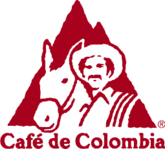Eje Cafetero - Day2: Parque Nacional del Café
(Eje Cafetero Photos)
The principal protagonist of this region is undoubtedly the coffee plant. This plant is fairly easy to recognise with its dark green, glossy leaves. The plants in this region seem to be the size of a small bush, but can grow to the size of small tree. It produces small berry like fruit, which usually contain two seeds - the beans! The beans are then fermented, washed and dried. I never realised this, but the roasting part usually occurs in the destination country. Most of you probably will know the rest of the process.

By my reckoning, coffee must be one of the most popular (non-alcoholic) beverages in the world today. Coffee is grown in various Central and South American countries, as well as parts of Asia and of course Africa (from where it is thought the plant originated). It is one of Colombia's best know export products. The majority of Colombian coffee growers are fairly organised and are represented by the Federación Nacional de Cafeteros de Colombia (Federation of Colombian Coffee Growers). The Colombian coffee brand is well known thanks to Juan Valdez and his "burro", a character created out of some clever marketing by the Federation. The logo is recognisable to most in North America. They also have a web site whose address is http://www.juanvaldez.com/ (or for the Colombian site: http://www.cafedecolombia.com/). So it is no surprise that the Federation created a coffee theme park, El Parque Nactional del Café.
The park is set on a hillside with a mixture of coffee plants and thick tropical foliage. The circuit starts with a walk through the history of coffee in Colombia in the park's museum. Once well briefed, you embark on the long, winding "eco-trail" passing numerous examples of coffee plants grown in Colombia (there are about five varieties grown - all of the 'arabica' type which produces the highest quality, smoothest coffee). The park also contains a wide variety of weird and wonderful tropical plants.

Near the end of the trail is a theatre showing the obligatory 'coffee show' once an hour, every 30 minutes past the hour. I would have been quite happy to have continued to the end of the trail, but I could not stray from the group, now could I! Well, if I have to. The show started with a traditionally, but colourfully dressed couple arguing over the muchacho's (young man's) wondering eye. Every so often he would flirt with a female member of the audience, increasing all the more the jealousy and ire of his girlfriend. The lover's tiff was settled with a machete fight.
The muchacha (young lady), wanting to get her own back, started searching for eligible masculine character from the audience and ... you can see where this is going. From the moment her eyes started scanning I realised how exposed I was. I was sitting on the left side of the theatre, one row from the front. It seemed like everyone around was rather small, so there was no where to hide. With my decidedly un-Latin physical traits, I knew I stood out like the proverbial 'sore gringo'. Her gaze settled on me, and I knew it. I made a "Who, me?" expression in the vague hope that I was mistaken.
"Si, tu. Ven. ¡Ven aqui!" she called out, reading my 'who me expression.'
Every pair of eyes in the theatre turned to me, willing me up and on to the stage. And there began one of the more mortifying experiences in my life. We danced a kind of jig, I with the grace of a wooden plank, as the audience cheered (I think they may have been laughing) and clapped in rhythm (there is a slightly blurred photo that I might post). The tit for tat game continued when the muchacho then plucked some poor, unsuspecting girl from the audience, and she was made to perform. Fortunately, it was all over in minutes and the show proper began.
We eventually reached the Plaza Bolivar, a mock-colonial square, at the bottom hill. Keeping to our tight schedule and missing lunch, we caught the orchid show and then a ride on the train. The train takes you from the plaza to various other attractions, but we had time only for the outward and return trips and nothing else. On reaching the far station it became clear that we could not stay on the train for the return trip. We had to get off and line up again. The train ride was quaint, but I have little patience for queues. So I told the guides that I would be walking back. "Walk!?" It was as if they had never been faced with such a request. "It is not safe! You will get lost! One of us will come with you!" Oh, give me a break. I had a map, the paths were well signposted and it was all of 500m. I will be fine and I will not get lost. They gave me a worried look as I marched off.

I arrived back at the main plaza a good 10 minutes before their train pulled into the grand looking station - time enough for a tinto (as a cup of black coffee is known in Colombia, but in the rest of the Spanish speaking world you would get a glass of red wine if you ordered a tinto). Before catching the teleferico (cable car) for the ride up the hill I managed to find the man himself, Señor Valdez, and convinced him to pause for a photo.


0 Comments:
Post a Comment
<< Home